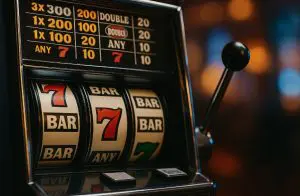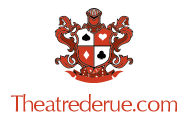Ever stared at a slot machine’s info screen and spotted something like “RTP: 96.5%” and thought, hey, that sounds fair enough? Yeah, you’re not alone. Most of us have been there — maybe even feeling a little smug, thinking we’ve cracked the code. But here’s the twist: that percentage doesn’t promise you anything close to a fair experience in the short run. RTP is a beautiful theory wrapped in mathematical precision… and then thrown into the chaos of real-world gameplay where luck, timing, and your coffee temperature somehow all seem to matter.
Let’s talk about why that little number isn’t quite the promise of fairness it appears to be — and why it’s still worth understanding anyway.
RTP, in Plain Talk
RTP stands for Return to Player. It’s the percentage of all wagered money a slot is programmed to give back over time. So, if a slot says 96%, it technically means that out of every $100 played, $96 should eventually make its way back to players. Sounds comforting, right?
Except it’s not your $96. It’s someone’s, somewhere, over millions — literally millions — of spins. It’s like the universe promising balance over infinity, but you’re sitting there on spin 43 wondering where your share went.
I remember watching a friend play Starburst once. Ten spins, nothing. Then one tiny win that didn’t even cover the coffee he’d just bought. “Where’s my 96%?” he said, half-joking. That’s the thing: RTP doesn’t care about ten spins or ten minutes. It cares about ten million.
How RTP Gets Calculated (and Why It Feels So Distant)
When developers test a slot, they simulate those millions of spins in controlled environments using something called a Random Number Generator (RNG). The RNG decides the outcome of every single spin — no memory, no emotion, just pure math. After all those simulated spins, they average the results and that average becomes the RTP.
The problem? We don’t play millions of spins in a lab. We play from our couch, on a Friday night, maybe with half a beer left and a streak of bad luck. The gap between theoretical perfection and real-life randomness is massive.
Why RTP Doesn’t Equal Fairness
A slot’s RTP isn’t some moral compass. It’s math. Fairness, though, lives in perception — and that’s much messier.
Two slots might both have 96% RTP, but one might pay tiny wins every few spins while the other holds back for rare, heart-pounding jackpots. To you, the second one feels unfair, even though statistically, it’s behaving exactly as intended.
It’s like two restaurants charging the same price: one gives you three small, delicious plates, and the other gives you one huge meal at the end. Same value, totally different experience.
RTP Is a Long Game — Really Long
RTP is what statisticians call a “long-term expected value.” It needs time — a lot of it — to even out. No matter how much you spin in a single session, you’re just sampling randomness. The machine doesn’t owe you a correction spin, and it doesn’t tighten or loosen because you’ve been “cold.” It’s memoryless.
I once went on a 300-spin dry spell on a game that supposedly had a 97% RTP. It felt like betrayal. But that’s because humans expect patterns, and slots are designed to break them. The math works over thousands of hours of play across everyone, not just you and your unlucky streak.
Volatility: The Personality Behind the Math
If RTP is the math, volatility is the mood. It defines how the game pays — small, frequent hits or big, rare explosions. High-volatility slots like Dead or Alive 2 can feel cruel before suddenly showering you with a win big enough to make you forget the pain. Low-volatility ones feel cozy — wins come often, but they rarely surprise you.
It’s a bit like dating. One slot gives you constant sweet texts but never commits; the other ghosts you for weeks, then shows up with roses and an apology trip to Paris.
Both can have 96% RTP, but they deliver that percentage in totally different emotional arcs.
Hit Frequency and the Illusion of Fairness
Hit frequency — how often you actually land a win — shapes your gut feeling about fairness more than RTP ever will. A slot with 25% hit frequency means roughly one win every four spins. Sounds fair? Maybe, until you realize many of those “wins” are smaller than your bet. You technically win, but your wallet disagrees.
I once sat next to a player who hit small “wins” five times in a row and shouted, “See? This one’s on fire!” Meanwhile, I checked his balance: it had dropped steadily with each “win.” That’s hit frequency at work — the illusion of success, keeping you engaged.
Regulation and the RTP Transparency Problem
Every licensed game must list its RTP and get audited by independent testing labs like eCOGRA or GLI. These labs make sure the math holds up. The issue isn’t usually the math — it’s how casinos deploy it.
Here’s a fun (or not-so-fun) fact: many slots are released in multiple RTP versions. The developer might offer 96%, 94%, and 91% variants, letting casinos choose which to host. Most players never notice the difference. Imagine ordering a craft beer that looks the same but has 30% less alcohol than advertised. That’s kind of what a lower RTP version feels like.
So always, always check the RTP info inside the game menu. Sometimes it’s buried deep — the casino doesn’t want you to look.
When the Same Game Plays Differently
Let’s say you love Book of Dead. You play it on one site and feel like it’s reasonably generous. Then you hop to another site, and suddenly it’s stingy. No, you didn’t lose your luck — you probably switched to a lower RTP version. That 2% difference might sound minor, but over thousands of spins, it adds up faster than you’d think.
It’s like someone quietly changing the rules of blackjack mid-shoe and pretending it’s all the same. Technically legal in some jurisdictions, but morally murky.
RNG: The True Heart of Fairness
Behind the flashy reels and bonus sounds, fairness lives and dies by the Random Number Generator. It ensures every spin is independent — no “hot” or “cold” streaks, no stored memory, no cosmic karma.
RNGs are regularly tested for randomness. Without them, casinos would basically control fate, and that’s not how regulated markets work. But humans being humans, we love to find patterns that don’t exist. The RNG doesn’t care that you’ve been losing for 15 minutes straight. It doesn’t care if it’s your birthday. Every spin is born fresh.
The Brain vs. the Math
Our brains are wired to hate randomness. We crave logic, and when we can’t find it, we invent it. That’s how we get myths like:
- “The machine is due for a win.”
- “It pays better late at night.”
- “I should switch machines after five losses.”
I’ve even heard someone swear their slot “knows” when they lower the bet. It doesn’t. What it does know, or rather, what the developers know, is how to make it feel that way. The sounds, the near-misses, the animations — all designed to make your brain lean forward and think, “almost got it.”
RTP Alone Can’t Tell the Whole Story
 Imagine two slots, both with 96% RTP. One gives you 200 mini-wins that keep you spinning. The other gives you nothing for an hour, then drops a massive win that makes your heart jump. Statistically the same, emotionally opposite. One feels “fair,” the other feels like a psychological prank.
Imagine two slots, both with 96% RTP. One gives you 200 mini-wins that keep you spinning. The other gives you nothing for an hour, then drops a massive win that makes your heart jump. Statistically the same, emotionally opposite. One feels “fair,” the other feels like a psychological prank.
Fairness, in practice, isn’t about the math. It’s about the emotional rhythm — the feeling that you’re being treated consistently, even when losing.
The Biggest Myths, Debunked
Let’s clear up some of the persistent nonsense floating around slot forums and bar stools:
- High RTP = more wins. Nope, not necessarily — could just mean fewer but bigger ones.
- RTP works session by session. It doesn’t. It’s measured over lifetime-scale data.
- RTP can be “reset.” Not unless the casino is committing fraud.
- Casinos secretly tweak RTP live. Regulated ones can’t. They must submit new versions for testing.
- Low RTP = unfair. Only if they hide it. Transparency is what matters most.
Fairness comes from honesty, not just percentages.
How to Actually Use RTP to Your Advantage
Okay, so RTP isn’t a crystal ball — but it’s not useless either. Here’s a practical, human way to think about it:
- Always check the game’s info tab for the listed RTP.
- Compare casinos; some quietly run lower versions.
- Match RTP with volatility: if you like steady play, pick high-RTP low-volatility slots.
- Don’t chase “streaks” — every spin resets your odds.
- Treat RTP as a guide, not a promise.
Sometimes, just knowing the rules helps you stay grounded — like realizing the house edge is a feature, not a bug.
Regulation: The Human Side of Numbers
Reputable jurisdictions like the UK, Malta, and Gibraltar enforce RTP transparency and RNG audits. But new markets often don’t have the same rigor. Some even allow unlisted RTPs or variable versions without disclosure. That’s like labeling a snack “low calorie” and skipping the fine print.
There’s growing pressure for universal RTP disclosure standards. Some player advocacy groups are already comparing casino RTP settings publicly — the way gamers compare frame rates. It’s a start toward accountability.
Fairness Beyond Numbers
A fair slot isn’t necessarily one that pays a lot. It’s one that plays honestly, tells you the odds upfront, and behaves consistently. You can forgive a “cold” machine, but not a deceitful one.
I once met a developer at a gaming expo who said something that stuck with me: “RTP is math. Fairness is trust.” That’s the best way I’ve ever heard it put. A slot can have a 91% RTP and still feel fair if it behaves transparently. Likewise, a 97% slot can feel crooked if it hides behind flashy design and opaque mechanics.
So, What Should You Take Away?
RTP is just one piece of the puzzle — the skeleton of fairness. But the muscles and heartbeat come from volatility, transparency, and randomness that truly works. When those line up, you get a game that feels balanced, even when it doesn’t pay.
And maybe that’s the point. Slots aren’t about perfect returns; they’re about imperfect excitement. RTP just tells you the long-term story — the rest, you’ll feel in the rhythm of your spins, your streaks, and those weird little moments when you swear the reels are teasing you on purpose.


